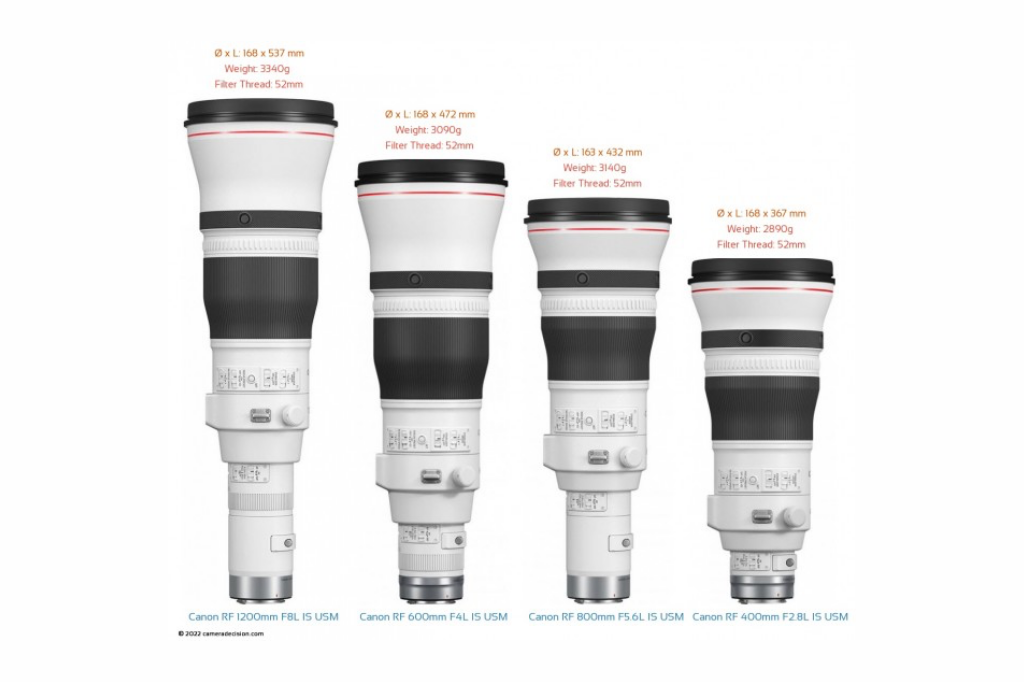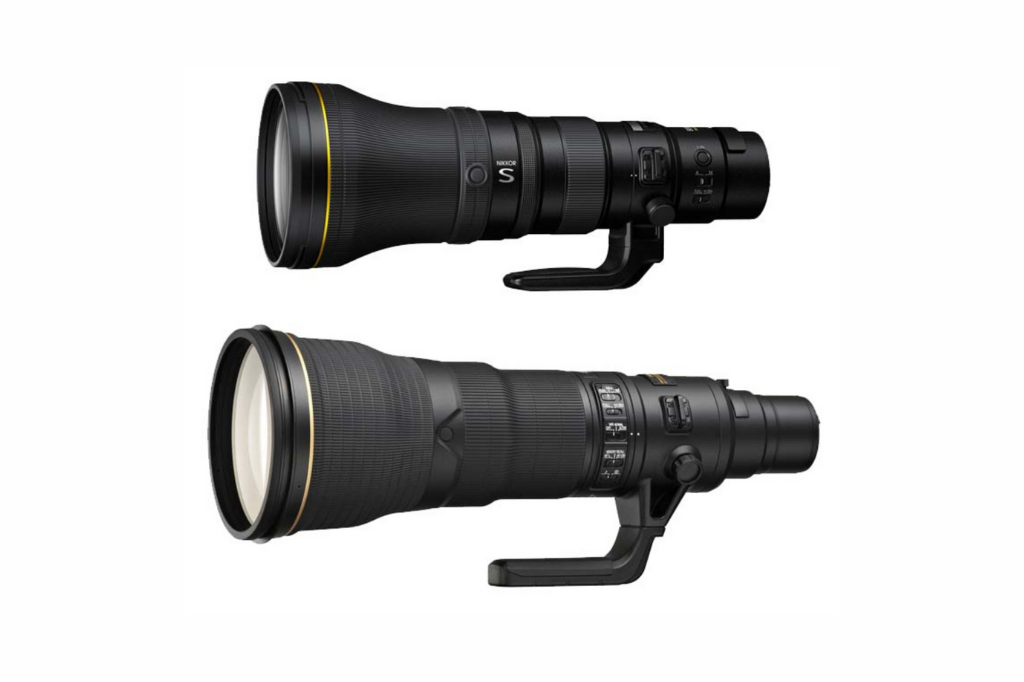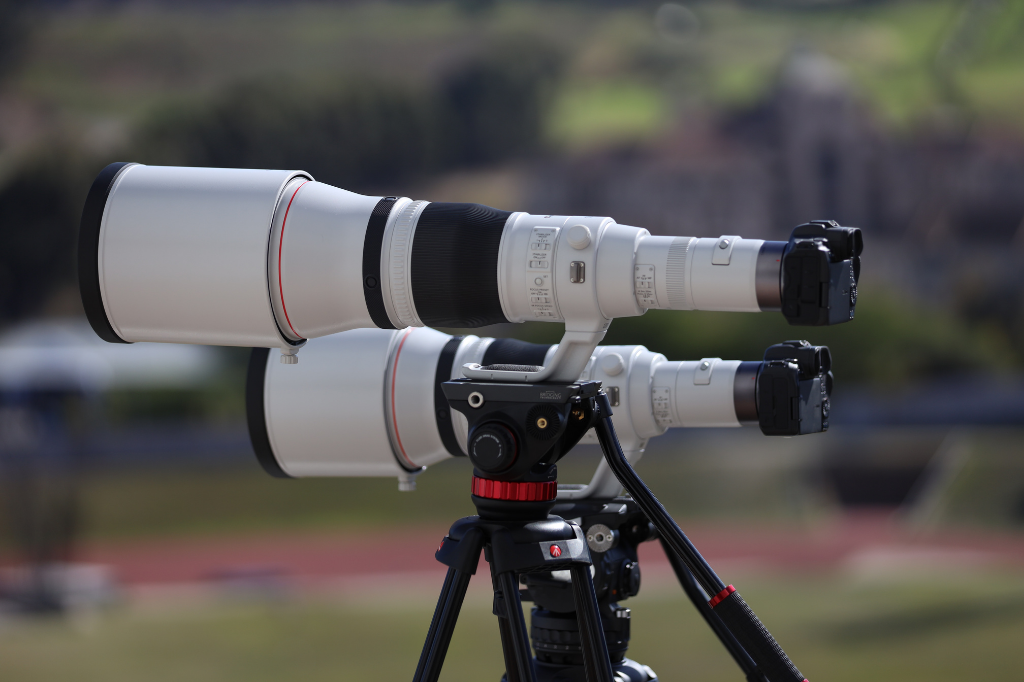It is no secret that all the way back in 2008, Panasonic kicked off what would eventually become a revolution within the camera industry, when they launched the Lumix DMC-G1. This unassuming, comparatively small, digital camera with interchangeable lenses was the first Mirrorless camera.
Today, 14 years later, every mainstream camera manufacturer offers mirrorless cameras within their line-up. In fact, mirrorless cameras make up the majority of cameras on sale today along with lenses for these cameras. But there has been a bit of an empty spot on the shelf of most mirrorless manufacturers: Super-Telephoto Lenses.
A super-telephoto lens is generally considered a lens with a focal length above 400mm. This is where lenses start to get big, heavy and expensive, and most camera manufacturers simply did not have a proper selection of these lenses for their mirrorless line-up. That has changed and since 2018, an increasing amount of super-telephoto lenses have been released, with both Canon and Nikon bringing some brand new glass to the party. They’re big and heavy, but not as big and heavy as you might expect…
New Canon Entries
Canon upped the ante when they announced the RF 1200mm f/8 L IS USM Lens in 2022. As this is being written, the Canon RF 1200mm is the longest full-frame focal length lens in production and you can add a 2x extender. Yes, you read that correctly; 2400mm of Canon L-series goodness.

Now for the really important part. The big and heavy part. You might not know this, but Canon has made a 1200mm lens before. In 1993 the EF 1200mm f/5.6 was unveiled and if you look at this lens, next to a person for scale, it is a little bit ridiculous. It was 83.6cm in length.

It gets even more ridiculous. This lens weighed 16.5kg. This was not a usable lens. Apparently, fewer than 100 were ever made and Canon discontinued it in 2005. Fast forward to 2022 and the new RF 1200mm f/8 L IS USM is a very different beast.
When you pick it up you are shocked by the weight of the lens. The lack of weight. It catches you by surprise and is far lighter than you expect. How about 13.16kg lighter than the old 1200mm? The RF 1200mm weighs in at just 3.34kg, and while that is definitely still a heavy lens, it is a vast improvement on what came before. In addition, the new lens is also 299mm shorter and significantly “thinner.”

Along with the RF 1200mm, Canon also announced a new RF 800mm f/5.6 L IS USM lens. At the time of writing, Canon still manufacture a EF 800mm f/5.6 L IS USM Lens and this has been in production since 2008. One would not expect as significant an improvement in size and weight as on the 1200mm, dealing with a far newer lens design compared to the 1200mm from 1993, but the new RF 800mm is still quite a bit smaller and lighter.
A 1.36kg weight loss is nothing to scoff at and the RF 800mm f/5.6 is 29mm shorter than the EF 800mm, not bad at all.

With these two new additions, Canon now offers a range of L-series super-telephoto prime lenses designed to meet the most serious of demands. In addition to the RF 1200mm f/8 and RF 800mm f/5.6, an RF 600mm f/4 and RF 400mm f/2.8 is also available.

Let’s not forget about Nikon
Nikon have been hard at work bolstering their own super-telephoto line line-up for the Z-series mirrorless cameras and most recently announced a new Z 800mm f/6.3 VR S lens. Not to be outdone, Nikon managed to drastically reduce the size and weight of the Z 800mm lens when compared to the AF-S 800mm f/5.6, designed for the DSLR F-mount.
Coming in at 2.2kg lighter and 76mm shorter is an impressive feat, but to also be more affordable than the DSLR variant is a truly nice surprise. Some of these reductions will be down to the one-third stop slower aperture, but that would not be noticeable when shooting at the distances 800mm lenses are generally used for.

Within the Z lens line-up, Nikon now offers a 400mm f/2.8 and this 800mm f/6.3, not a bad start at all and with the success of their flagship Z9 mirrorless camera, we would expect to see more telephoto lenses built to appeal to those users.
Now for the most important question: Do you need a Super-Telephoto Lens?
These lenses are designed for highly specialised photographers, requiring the utmost image quality while shooting over distance. These are typically professional sports and wildlife photographers who need to capture the highest possible quality but can’t get close to the action.
There is a vast array of telephoto and even super-telephoto lenses available from lens manufacturers for all levels of photography, which means there will be one that is right for you. With Canon, Nikon, Sony, Fujifilm, OM Systems (Olympus), Panasonic and more, offering all options of exciting new telephoto lenses; photographers have never been more spoiled for choice when picking that perfect sports or wildlife lens.
Mirrorless Lenses are smaller and lighter. Right?
Seeing this level of weight and size reductions, the question inevitably comes up: “How are lenses for mirrorless cameras so much smaller than those for DSLR cameras?” There are a couple of points to take note of, but let’s start by stating that mirrorless camera lenses are not necessarily smaller and lighter than DSLR lenses.
There are a number of reasons why mirrorless lenses can be smaller than those for DSLR cameras and one of the most important reasons is the significantly shorter flange distances in mirrorless cameras. This makes it easier for companies to develop lenses for mirrorless cameras because the optics can sit far closer to the sensor and this fact allows for a more efficient lens design. This is especially true for wide angle lenses. This inherent efficiency allows for lenses that are smaller and lighter.
But, there is an added complexity emanating from the latest mirrorless cameras – The rapid increase in sensor resolutions and resolving ability. This leads to the need for significant increases in optical quality and, therefore, complexity in optic design. Mirrorless lenses are, for the most part, of a significantly higher optical quality than older DSLR lenses, aiding in delivering images that are sharper and clearer than ever before and with far less aberrations. Unfortunately, adding complexity back into the system pushes the size of lenses larger. Today there are many examples of mirrorless lenses that are larger and heavier than their DSLR predecessors.
The other main reason for smaller and lighter mirrorless lenses might already be pretty apparent and is undoubtedly a major reason for the size and weight reductions in the 1200mm and 800mm lenses discussed above – the age of DSLR lens designs. Let’s take the 1200mm lenses. Yes, there will be an immediate size advantage in the new lens due to the f/8 aperture compared to the f/5.6 in the old lens, that cannot be disputed, but the major factor will be that the old lens was designed prior to 1993. The technological advances between 1993 and 2022 are near unfathomable; from materials available to computer aided design, the advantages are undeniable.
Lenses designed for mirrorless cameras might not always be smaller and lighter, but they are sharper, clearer and far less prone to distortion and aberrations. Simply put, in this case, newer is just better.
Visit our online store to find out more about Super-Telephoto Lenses.









